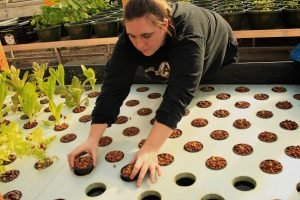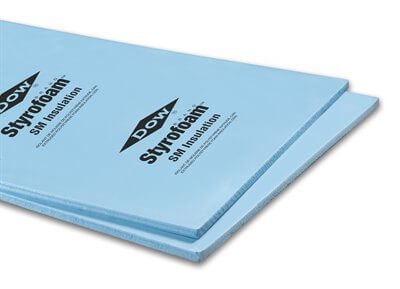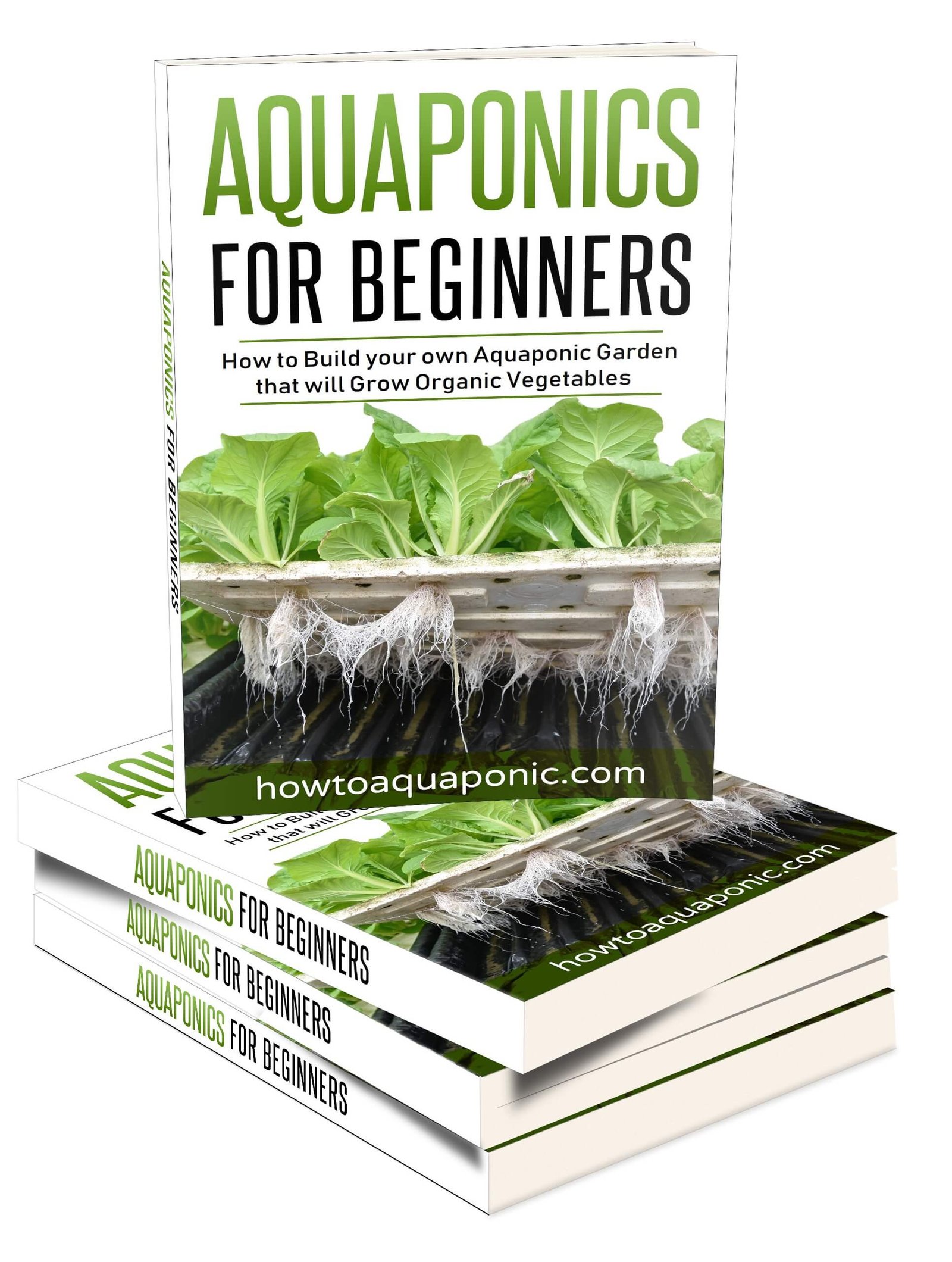Floating rafts, also called deep water culture of simply DWC is mostly used in commercial systems.
Making DWC floating rafts
There are several options regarding the Material used in your floating raft system:
- Polystyrene Sheets
These are cheap to buy and surprisingly effective in your floating raft system. You can purchase huge sheets of these and cut them to fit the size of your tank or tanks.
This is a good choice as the cost is minimal and the holes can be easily made or enlarged to accommodate your plants.

What is also great about this system is that you can select a tank large enough to have several different stages of plant alive at the same time. The boards float and will gradually move on the water. By planting seedlings you’ll be able to add more seedlings after they have moved and created a space big enough for the next batch of seedlings.
The plants will gradually float across the raft; becoming fully grown by the time they reach the other end. This allows you to pick them out and then plant new; effectively creating a never-ending cycle.
This is actually the option that many commercial aquaponic set-ups use.
If you want to paint the top, don’t use paint with mildewcide in it for the same reason.
Try to find dow blue board this is the best option there is. If you can find it look for white styrofoam rafts like a food box or coffee cup. It’s not as strong as the dow blue board so it’s best to make small rafts with them in order for them not to break. Click here for more information
The kind of raft you want to use:

- Foam
This is another option for your floating raft tank. It is not as effective at floating as the polystyrene sheets. Unfortunately, the foam will not last for as long as the polystyrene; adding to your costs. In many cases, the foam is only good for one season.
- Plastic
Another option, although not one that is used often, is plastic sheets or guttering pipe. This can have holes drilled into it for the roots to dangle in the water.
Plastic will last for a long time but you may have issues with stability and this can be a more costly solution to the material issue.
- Home Made
In order to keep your costs low, you may wish to consider adding some plywood to plastic or even pieces of foam that you have lying around. Providing the material floats it can be put on the water and used to accommodate your aquaponics plants.
However, you need to consider whether the material is likely to rot in the water or not. If it does then you’ll need new material every year which can be time-consuming and expensive. This makes it a good option for when you are experimenting with aquaponics but not a worthwhile long term solution.
It is also worth considering what wood you are using. Plywood is glued with glue which contains formaldehyde; it is likely to stunt the growth of your plants and fish; it could even kill them.
- Organic Styrofoam
If you are concerned about your environmental footprint you may like to purchase organic Styrofoam boards. These work in the same way as the polystyrene boards but are certified to be environmentally friendly.
It is even possible to paint these boards although you’ll then need to face the discussion regarding environmentally friendly paint and whether darker colors are better or not.
White is said to attract more algae which is not good for your system. However, many people consider white as a better color for seeing the algae and maintain that it is not responsible for increased algae production.
The Right Aquaponics Floating Raft Material
The bottom line is that the material you use will depend on what type of setup you have, your current budget and your level of experience.
It is fair to say that polystyrene boards are the cheapest and easiest option in most instances. However, if you are concerned about the environment you may wish to choose organic Styrofoam and if you are simply experimenting with the possibility of aquaponics anything that floats can work.
But don’t forget that you need to consider the effect that your float material may have on your setup; it could introduce undesirable toxins. The same is true for any paint you decide to add to your float; make sure it will not have a detrimental effect on your set-up!
It is also essential to remember that a good raft will float freely inside your trough. Don’t be tempted to narrow the trough in order for the raft to fit snugly and eliminate the potential for algae to form. It may work in this respect but it will not allow the plant to move through the tank as it grows; creating the never-ending cycle. Instead, you’ll have to keep moving it.
The bottom line is that it is best to invest in some polystyrene sheets and test out your aquaponics setup; you can always upgrade your raft material later if required.
Read more:
- Best plants for Aquaponics
- Best fish for Aquaponics
- How to choose the right pump for your aquaponics system
 I have written a book that contains all the information you need to get started with aquaponics.
I have written a book that contains all the information you need to get started with aquaponics.
Don’t be the person that makes painful mistakes during your first aquaponics build!
It has 265 pages filled with information about aquaponics. It’s available in paperback or eBook format.
You can buy it here on Amazon.com

Nick loves building, managing and giving others advice on aquaponics. He created this website to do just that. He is the author of Aquaponics for beginners. If you got a question contact him here or read more on the about page here.
